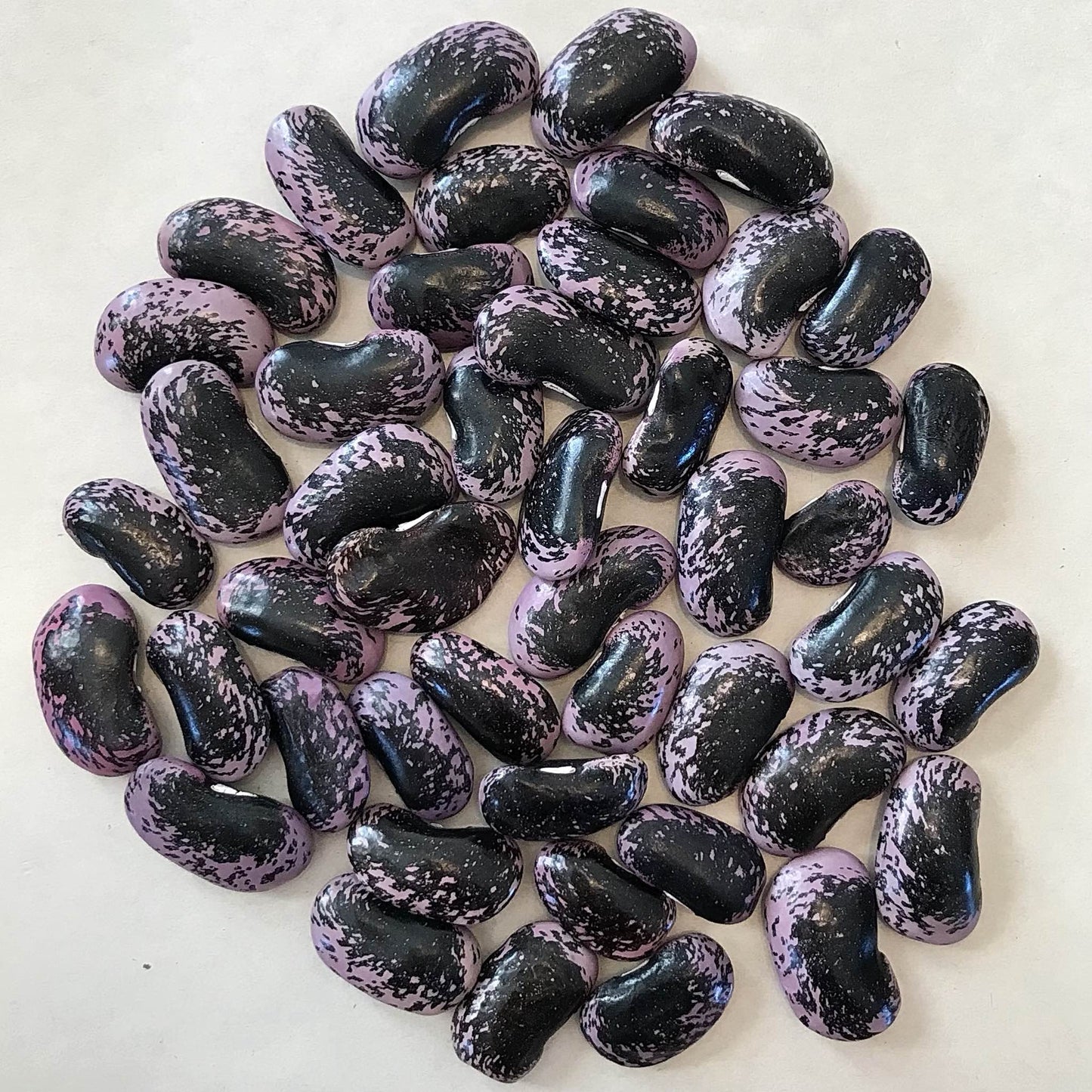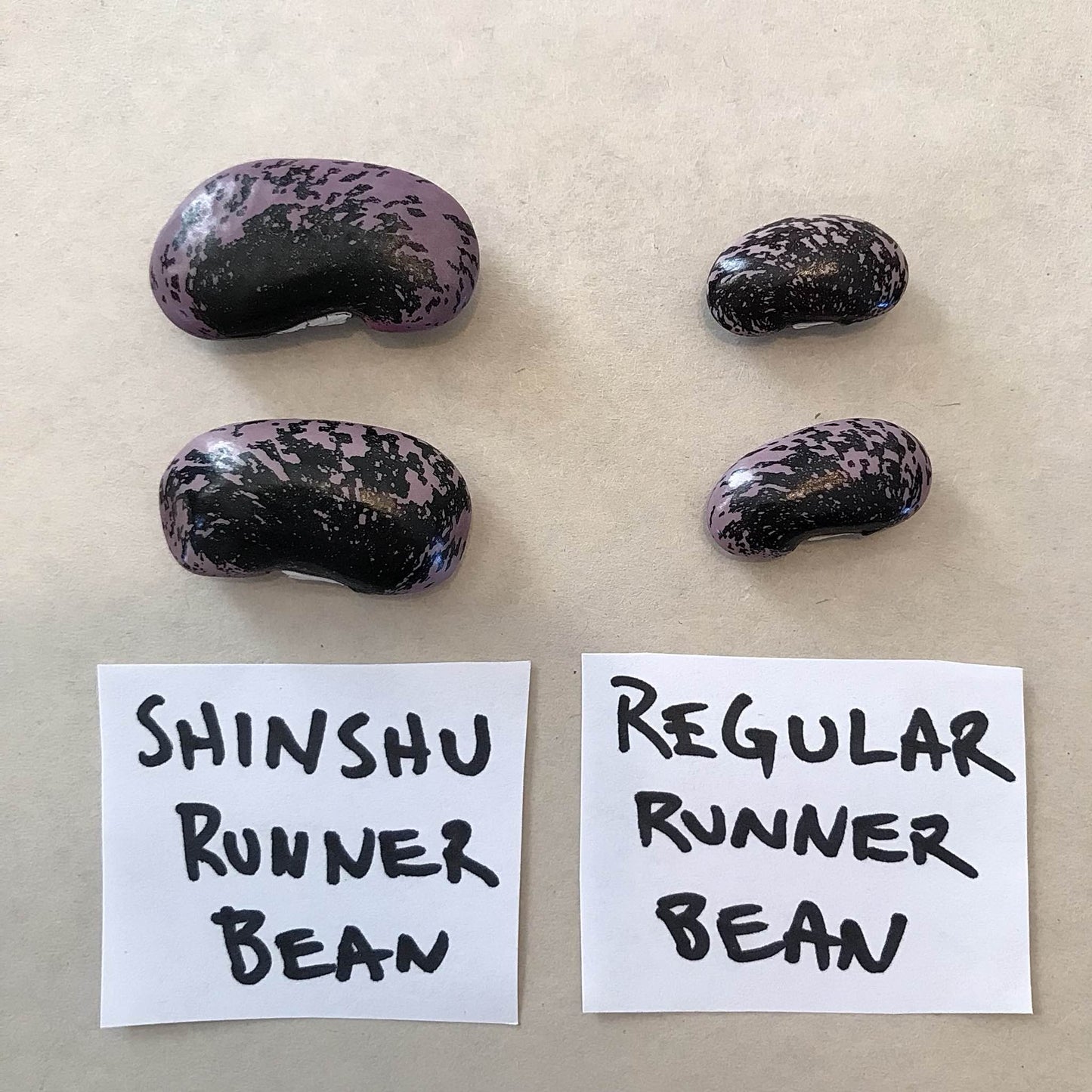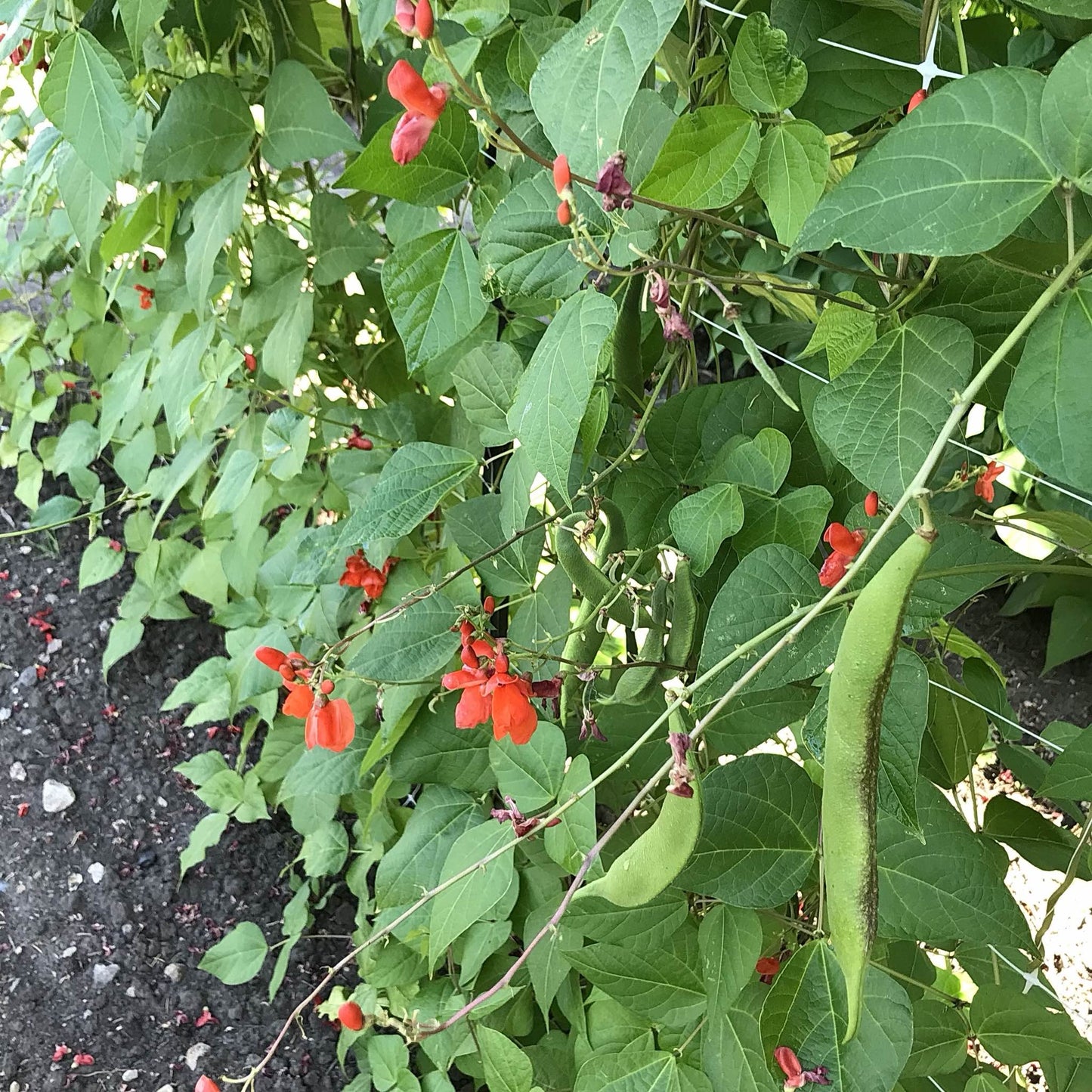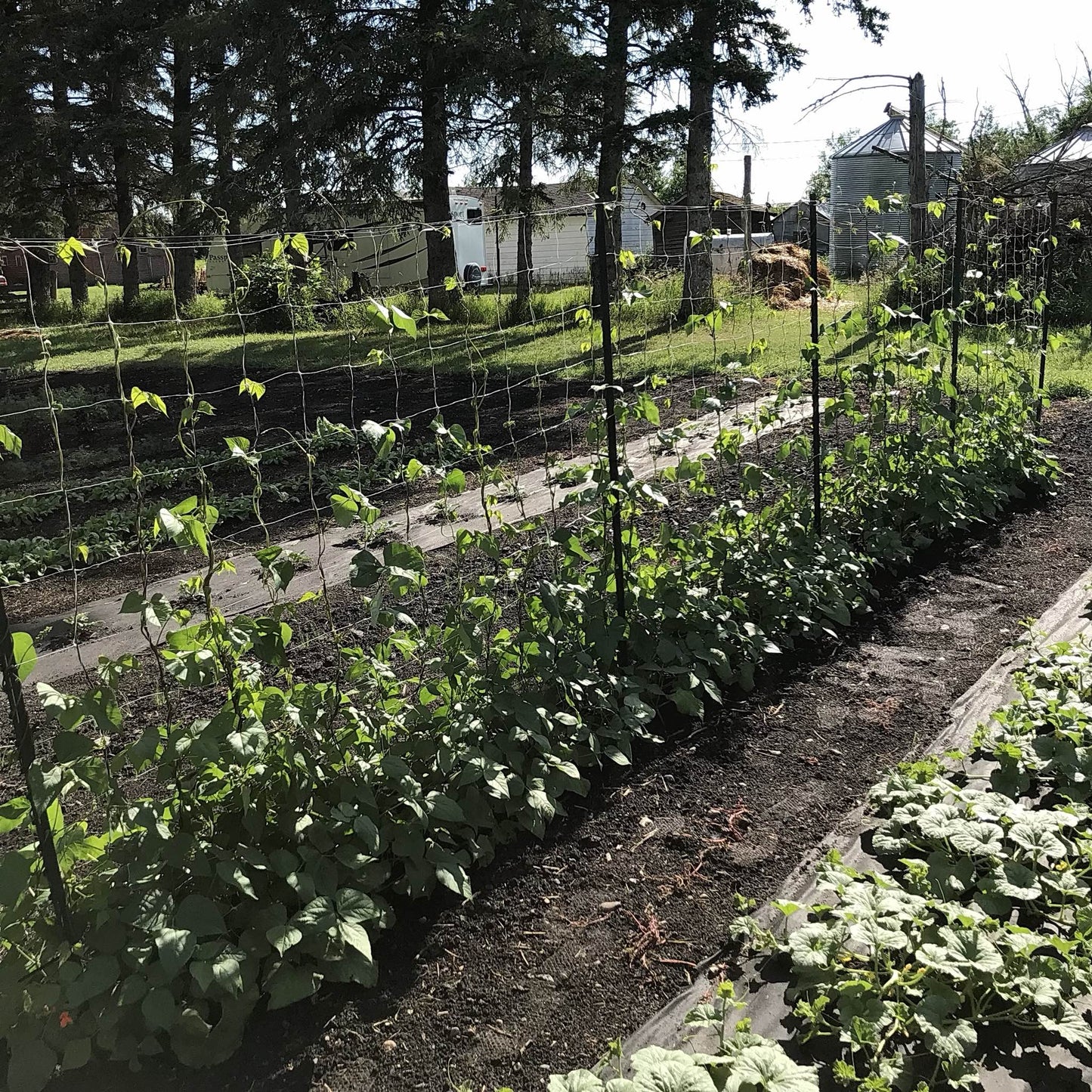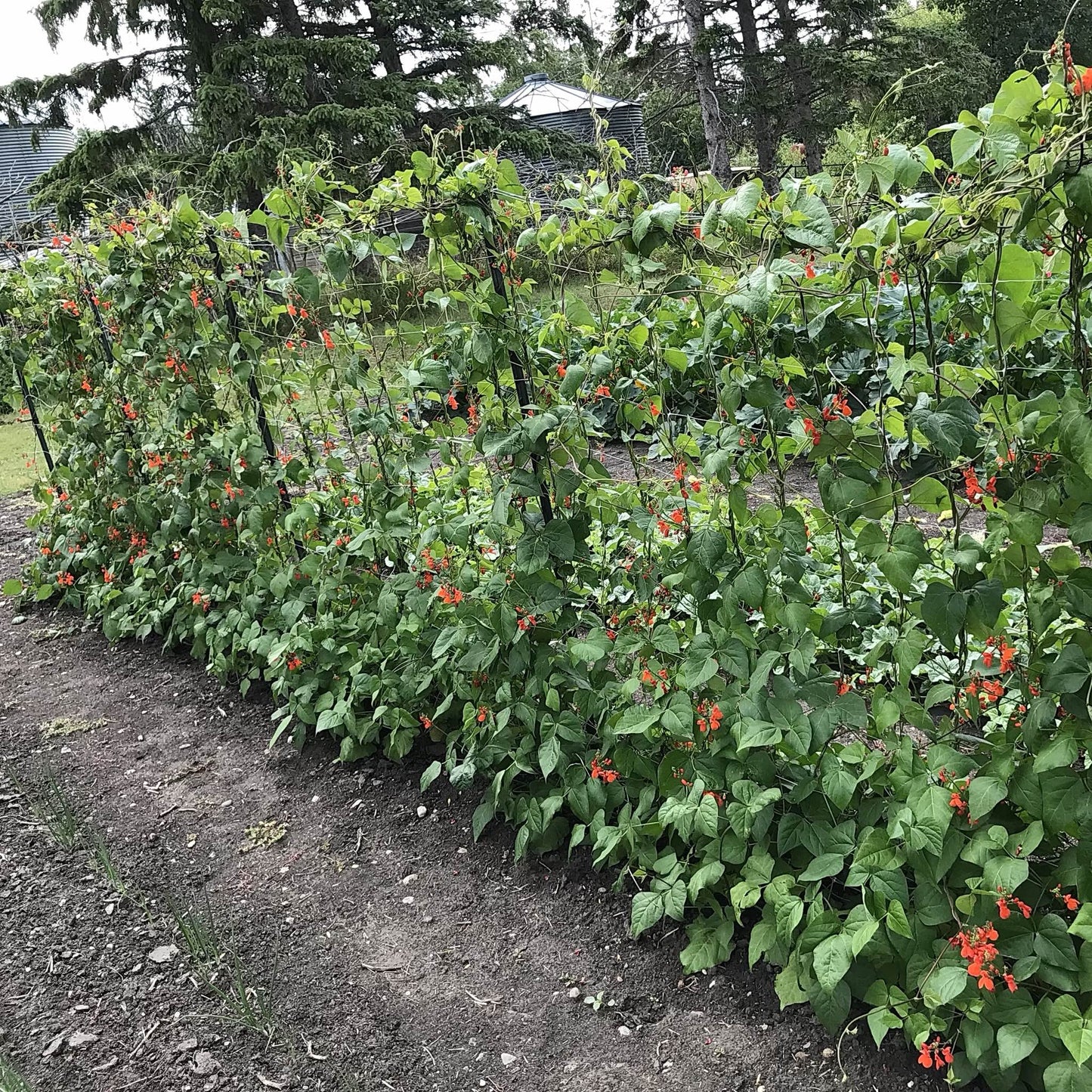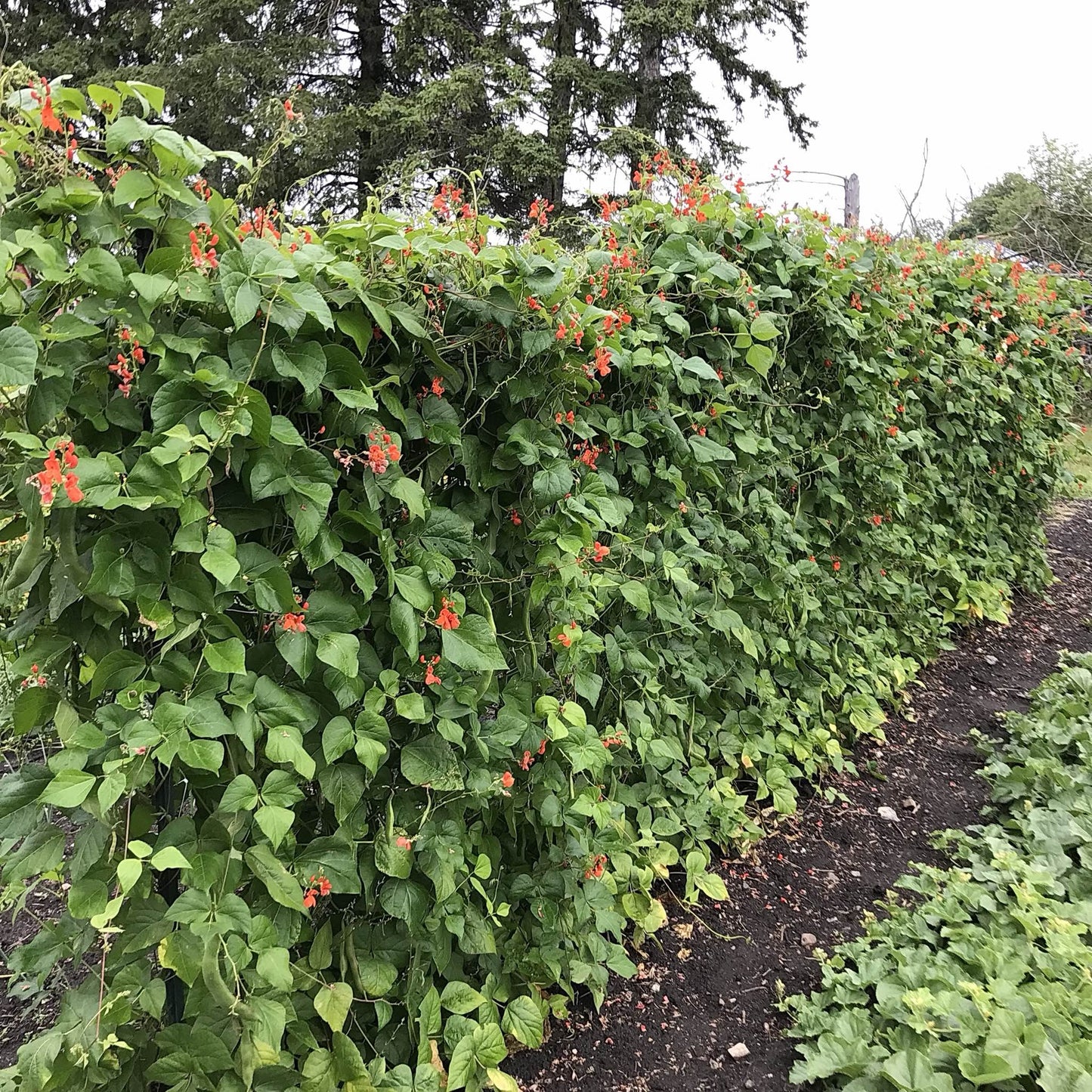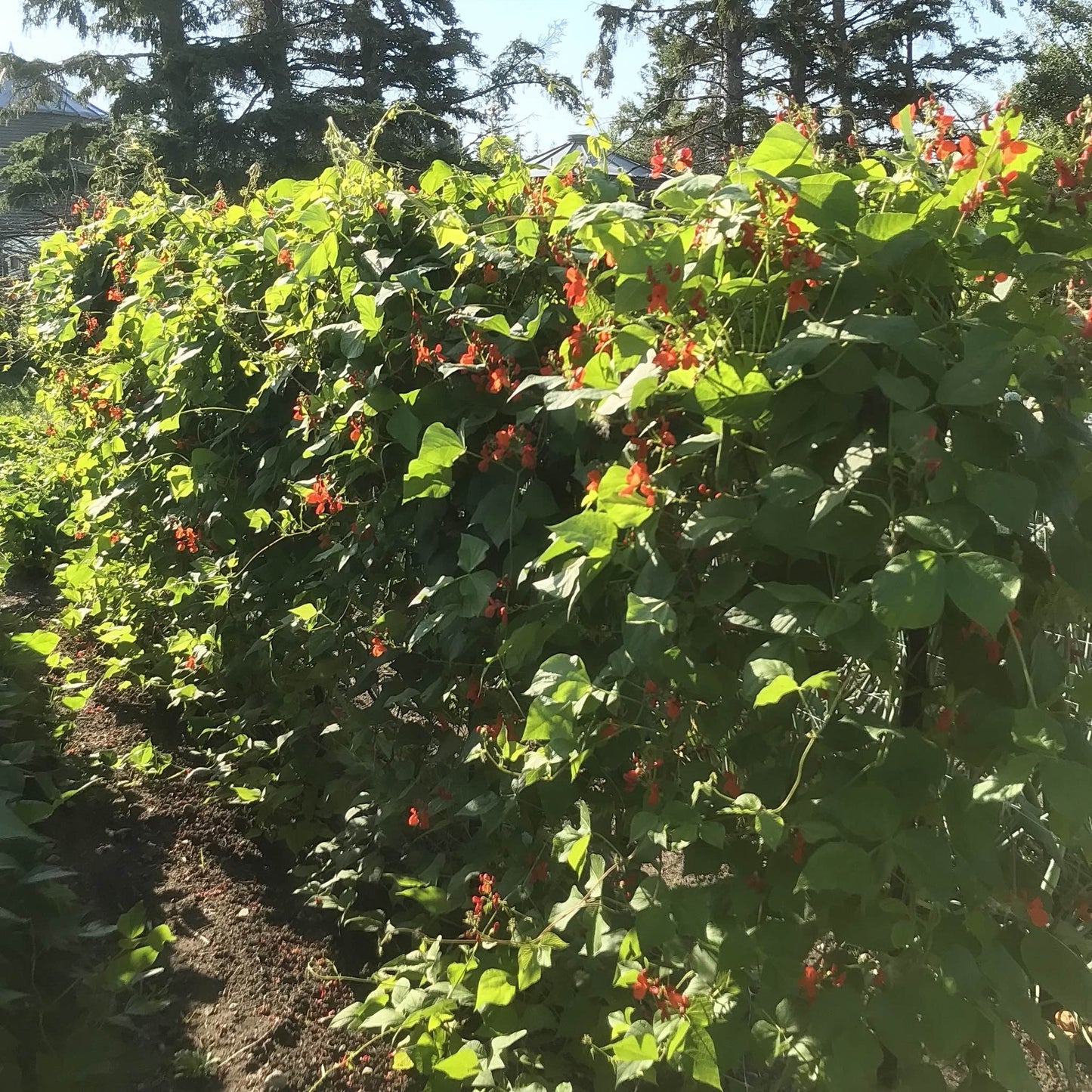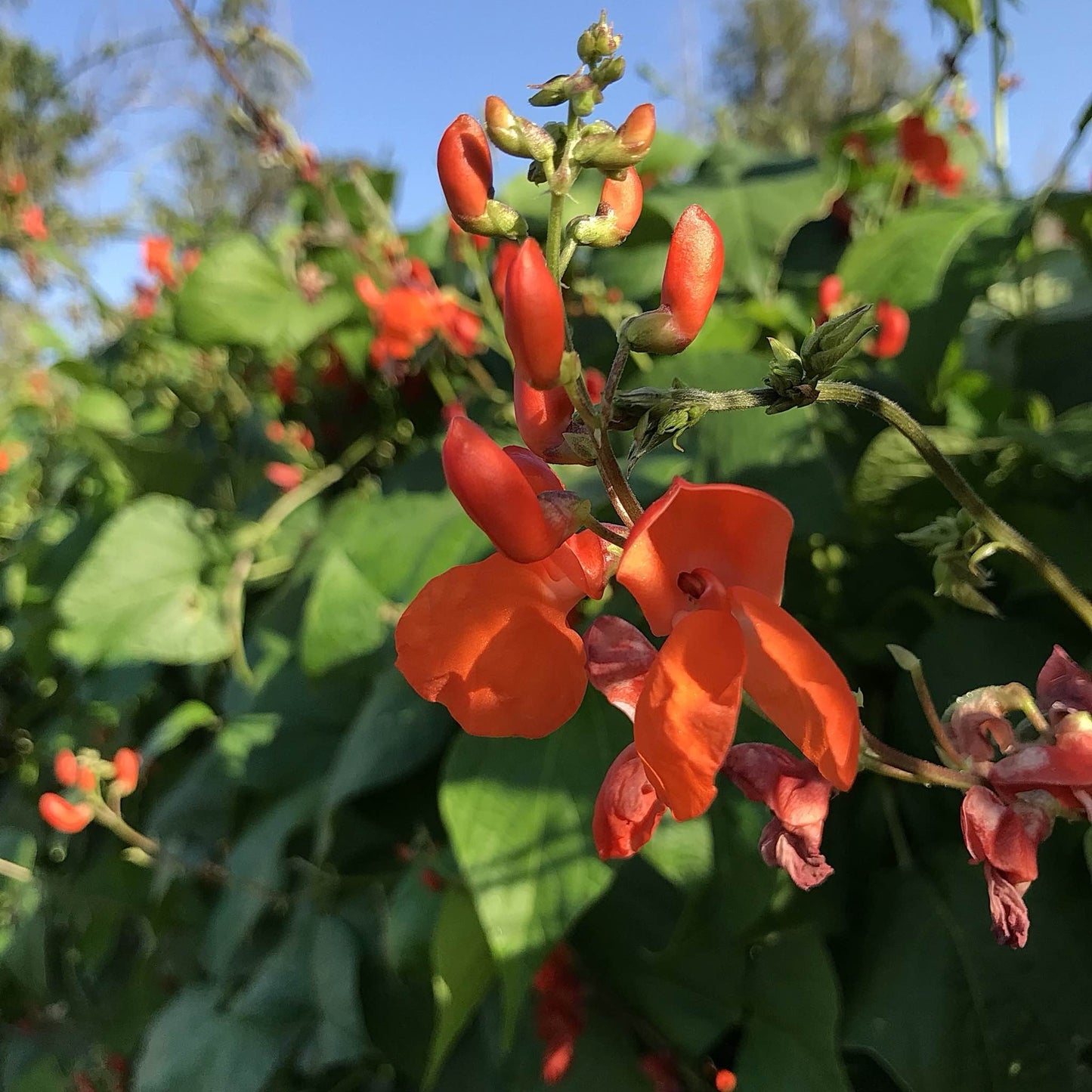Bean - Shinshu Runner
Bean - Shinshu Runner
Couldn't load pickup availability
Phaseolus coccineus
Runner Bean
75 Days Fresh, 105 Days Dry
This might be the largest bean out there. The seeds are huge, about two to three times the size of a regular runner bean. The vines are big too, up to 12 feet long with solid red flowers that are very popular with hummingbirds. Pods produce two to six black speckled lavender seeds. You can use the pods fresh, but I think these really stand out as a dry bean because the size is such a novelty. Really impressive in chili or soups where it will dwarf every other bean in the pot. They mature a little on the late side in my region, so I'm selecting for earliness in an attempt to increase the amount of pods that dry down on the plant before frost.
2025 Update: It turns out I do in fact have some unintentional crossing in my runner bean populations. Ugh.
Long story short: I hope to have a clean batch of these for 2026.
If you purchased these seeds and purity is very important to you, get in touch and I’ll send you a replacement once I have cleansed myself of Shinshu off-types.
Here’s what happened for those of you who like plant gossip...
2023’s population of Shinshu plants had a couple individuals that produced white seeds and white flowers on completely green plants. I was confused, because I thought I had taken adequate precautions to prevent crossing. Even though they can cross more easily than common beans, runner beans are self-pollinating so I didn't worry about it too much and assumed it was an unusual mutation or some other random genetic expression. I did have another runner bean population on the farm in 2022, but it did not have any completely white seeds which also gave me confidence.
That confidence was shortlived - last year I found some large dark blue-black beans amongst my other Shinshus, which were clearly from the blue-seeded runner bean population that was also growing on the farm in 2023.
In both of these cases the two beans were in separate plots. They were 840 feet apart in 2022, and 1120 feet apart in 2023, with buildings and trees and wetland between them. According to most isolation guidelines that should be sufficient, but apparently not on our farm.
I began to suspect hummingbirds were the culprit, as insect pollinators would’ve had ample opportunity to “clean up” on other flowering plants as they made their way from one end of the farm to the next. The hummingbirds here are obsessed with runner bean flowers, and now that I’ve confirmed the problem I can totally imagine them zipping back and forth directly from one patch to the other, especially after one of their frequent territorial squabbles.
The crossed material seems to have averaged out to about 3% every year. While I do quite enjoy finding chance off-types, this was one instance where my intent was to keep the population totally pure. To that end, I’m going to obtain more pure seed to plant this year, and may also embark on a clean-up journey of flower bagging and progeny testing to see if I can rid myself of the unwanted genetics in my own population.
Despite all this, I’m still going to sell some of these seeds here. Maybe you’ll get lucky and receive a cross, then you can breed a new giant runner bean! I eliminated all the white-flowered plants before the blossoms opened, and of course all of the black-blue seeds. From what remained I have selected only the biggest, best, most Shinshu-est looking seeds from this year which amounts to 40% of my total harvest. This of course won’t entirely remove the chance of getting some crossed material, but I’m hoping it might push below the 3% I’ve been observing so far. We’ll see soon enough.
Our original stockseed was sourced from Dylana Kapuler and Mario DiBenedetto of Peace Seedlings. May their runner bean exploits be forever free of unwanted pollinator interventions.
